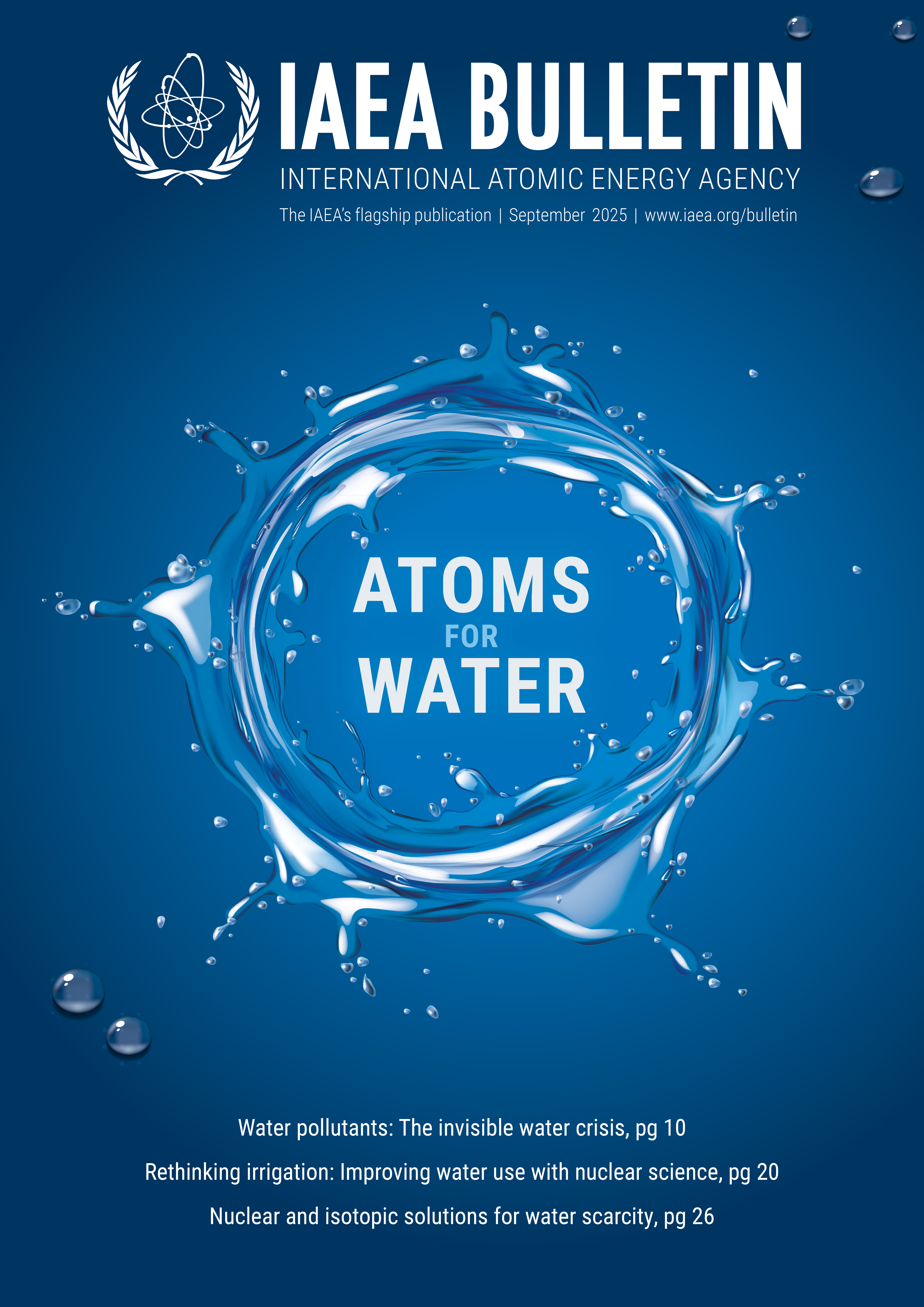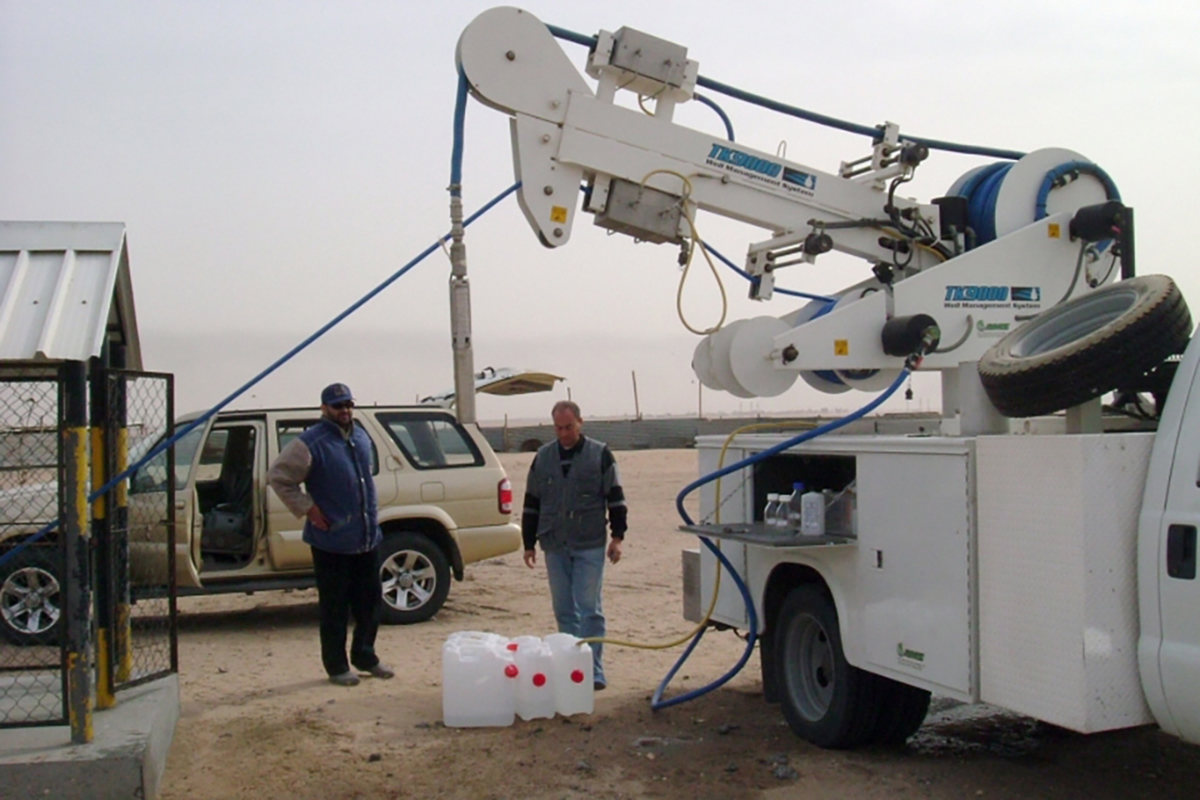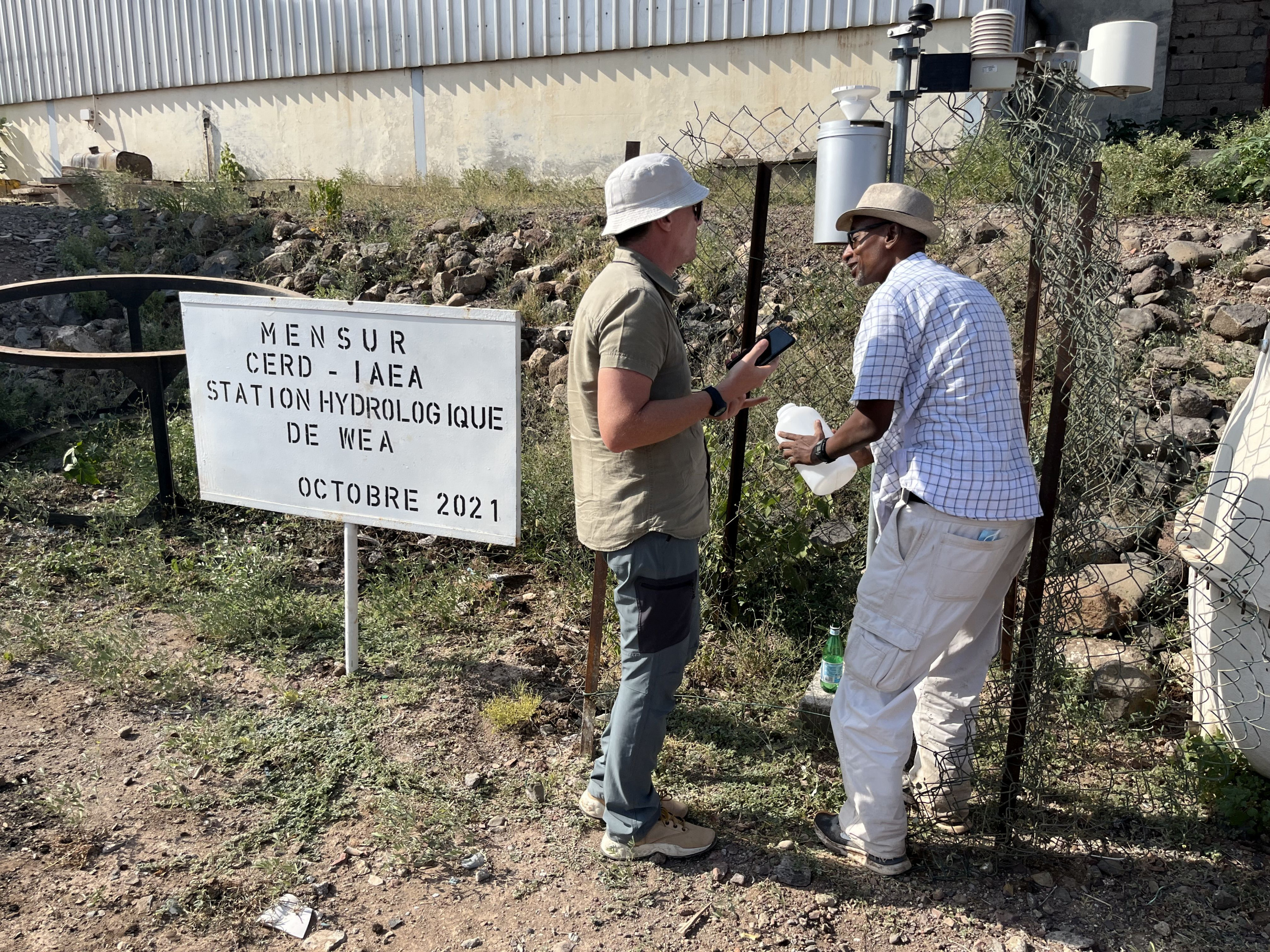In arid northern Kuwait, scientists lower a sampling tube deep into a dry well to reach the shallow pool of groundwater at its bottom. The water, which has been hidden underground for thousands of years, is being analysed as part of an IAEA research project on the country’s limited natural freshwater resources. The team is using isotopic analysis to study how carbon dioxide levels affect rainwater and groundwater and to better understand changes in water quality.
Groundwater is a scant resource in many parts of Africa and West Asia. Dwindling rainfall, rising temperatures and growing demand are increasing the pressure on the regions’ aquifers. Supported by the IAEA, countries are deploying isotope hydrology — a nuclear technique that traces the source, age and movement of water — to manage groundwater supplies more sustainably.
Isotope hydrology “gives us a fingerprint of the water molecule,” said Jodie Miller, Head of the IAEA’s Isotope Hydrology Section. “Using that fingerprint allows us to evaluate how long ago water in the ground fell as precipitation.”


